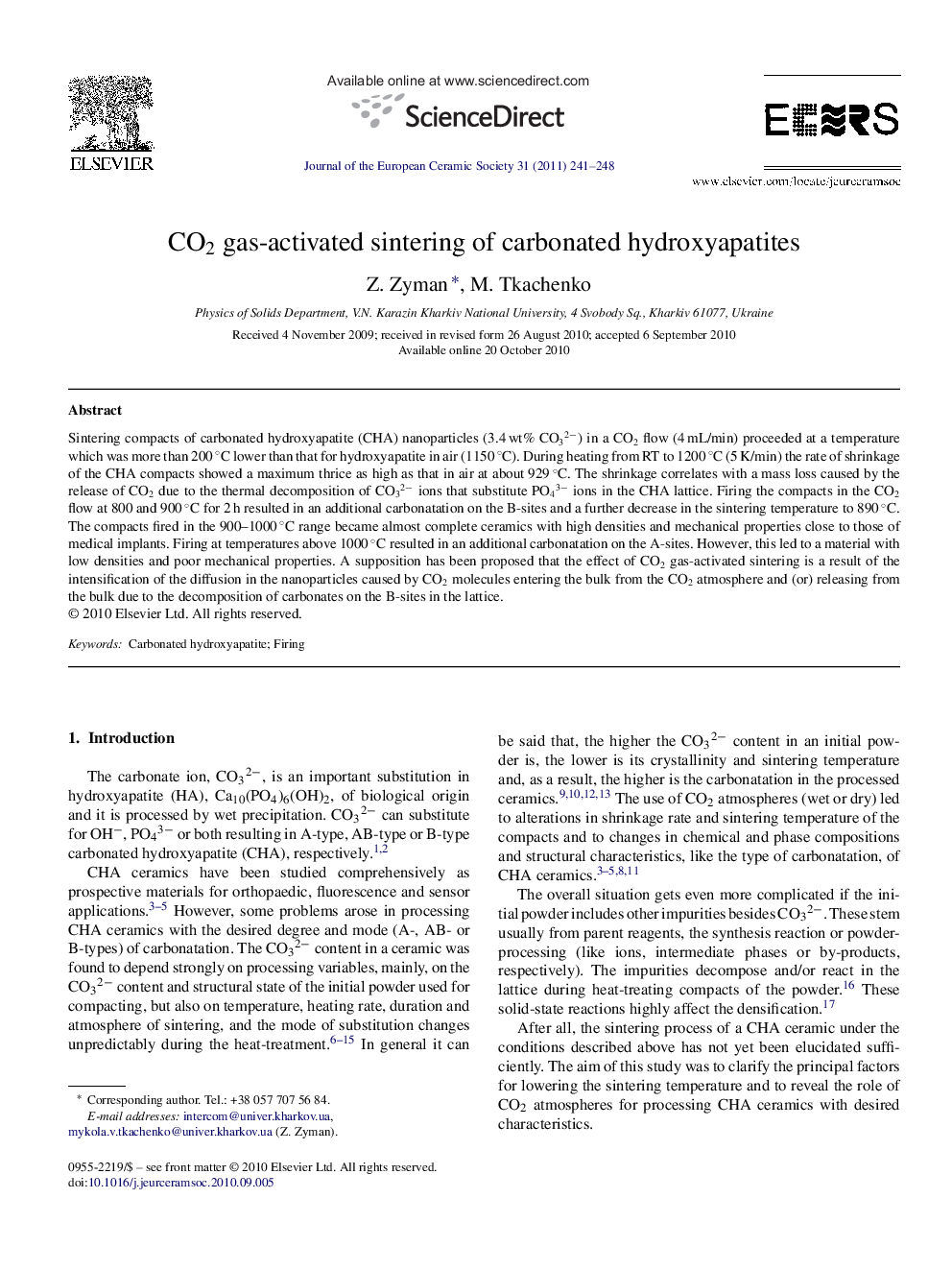| کد مقاله | کد نشریه | سال انتشار | مقاله انگلیسی | نسخه تمام متن |
|---|---|---|---|---|
| 1476874 | 991166 | 2011 | 8 صفحه PDF | دانلود رایگان |

Sintering compacts of carbonated hydroxyapatite (CHA) nanoparticles (3.4 wt% CO32−) in a CO2 flow (4 mL/min) proceeded at a temperature which was more than 200 °C lower than that for hydroxyapatite in air (1150 °C). During heating from RT to 1200 °C (5 K/min) the rate of shrinkage of the CHA compacts showed a maximum thrice as high as that in air at about 929 °C. The shrinkage correlates with a mass loss caused by the release of CO2 due to the thermal decomposition of CO32− ions that substitute PO43− ions in the CHA lattice. Firing the compacts in the CO2 flow at 800 and 900 °C for 2 h resulted in an additional carbonatation on the B-sites and a further decrease in the sintering temperature to 890 °C. The compacts fired in the 900–1000 °C range became almost complete ceramics with high densities and mechanical properties close to those of medical implants. Firing at temperatures above 1000 °C resulted in an additional carbonatation on the A-sites. However, this led to a material with low densities and poor mechanical properties. A supposition has been proposed that the effect of CO2 gas-activated sintering is a result of the intensification of the diffusion in the nanoparticles caused by CO2 molecules entering the bulk from the CO2 atmosphere and (or) releasing from the bulk due to the decomposition of carbonates on the B-sites in the lattice.
Journal: Journal of the European Ceramic Society - Volume 31, Issue 3, March 2011, Pages 241–248